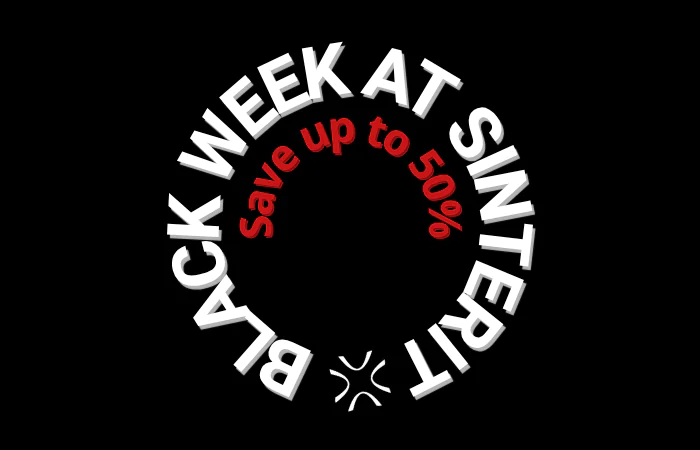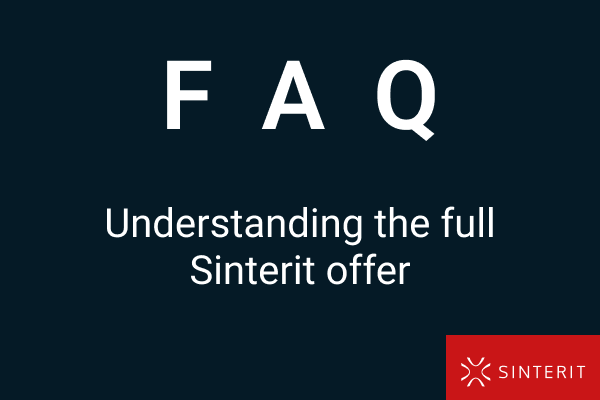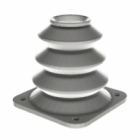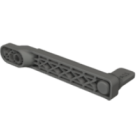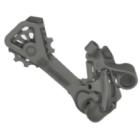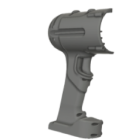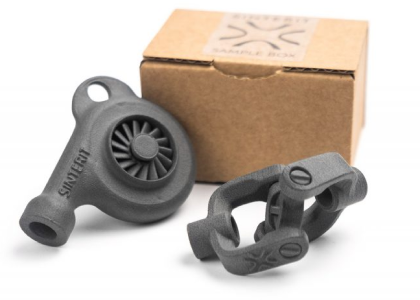FAQ: Comparing Sinterit SLS 3D printers — Lisa X vs. SUZY
What are the key differences between Sinterit Lisa X and SUZY?
SUZY is optimized for the fastest PA12-focused SLS workflow (and supports PA11.5), delivering simple day‑to‑day operation and quick print cycles. Lisa X is a versatile, open‑parameters platform for multi‑material SLS (PA12, PA11 variants including ESD/Onyx/CF, PP, PBT, TPU & PA11.5), enabling R&D control and 15–30 minute material changeovers. Choose SUZY for speed and straightforward PA12/PA11.5 production; choose Lisa X for material breadth, process control, and rapid job switching.
How do their build volumes compare, and which applications benefit from each size?
Both offer 130×180×330 mm for PA/PP. Lisa X extends Z to 340 mm with TPU. In practice, SUZY’s PA build volume suits fast PA12/PA11.5 prototyping and small batches; Lisa X’s identical PA/PP volume plus TPU Z‑headroom benefits flexible applications (TPU jigs/grippers) and mixed‑material labs.
Which printer is faster and more efficient for production-scale printing?
For speed/print‑time/workflow pace, SUZY is positioned as the faster workflow option. Lisa X emphasizes versatility and quick changeovers (15–30 min) across materials. For PA12/PA11.5 runs, SUZY minimizes cycle time; Lisa X enables mixed‑material scheduling with low downtime between jobs.
What kind of laser and scanning system does each printer use?
Both use a 30 W IR fiber‑coupled diode laser (976 ±3 nm) with a galvo scanner.
How do the temperature management and chamber systems differ?
Both are compact SLS systems with heated beds and IR heating. SUZY does not operate with nitrogen. Lisa X supports certain materials/workflows that require nitrogen ( for example: per HP guide), with process presets handled in Studio profiles.
Which SLS materials are supported by both printers, and which are unique to SUZY or Lisa X?
Both: PA12 Industrial and PA11.5. Lisa X additionally supports PA11 Onyx, PA11 ESD, PA11 CF (nitrogen required), PBT Optimal, Flexa Performance (TPU), PP, and documented HP used workflows. SUZY does not support PA11 ESD/Onyx/CF nor nitrogen-related operations.
How does the open material system work on each printer — are parameters customizable?
Both use Sinterit Studio, however only the Studio Advanced license unlocks open parameters. Studio Advanced license is available only for Lisa X and provides access to custom material parameters (laser power, hatch spacing, temperature offsets, scan strategies, skeletons). SUZY uses preset profiles for standard prototyping materials.
What level of precision and surface finish can be achieved with each model?
Both deliver professional SLS accuracy and detail suitable for functional parts; layer height ranges indicate resolution: SUZY at 0.075 mm; Lisa X 0.075–0.175 mm. Surface is the typical SLS matte/porous texture; media blasting improves finish; optional vapour smoothing may further seal/smooth PA11/PA12/PBT/PP parts.
How do the powder refresh ratios and material efficiency compare?
Refresh ratios are material‑specific (please refer to TDS of your material of interest). Typical examples: PA12 Industrial 30%; PA11.5 30%; Lisa X‑only materials vary (e.g., PBT Optimal 20%, PA11 Onyx 33%, PA11 ESD 60%, PA11 CF 40%, Flexa Performance effective 100% reusability with 20% recommended top‑up). Effective efficiency depends on nesting density and process control.
Which printer offers better ease of use and automation for everyday operation?
SUZY emphasizes streamlined operation and the fastest PA12/PA11.5 workflow (printing speed up to 20 mm/h, guided maintenance), ideal for everyday production‑like cycles. Lisa X provides convenience through material versatility and quick changeovers (15–30 min), plus Studio Advanced control for power users.
How does workflow integration differ — from powder handling to post-processing?
Both systems integrate with Sinterit’s powder‑handling and post‑processing chain. After printing, powder is vacuumed and then through the Powder Separator into a metal container, maintaining a grounded, antistatic path (grounding clamp, antistatic hoses) for safe powder collection and separation; reclaimed powder is sieved; parts are cleaned in the Sandblaster SLS.
What kind of maintenance and calibration do Lisa X and SUZY each require?
Routine tasks include chamber cleaning after prints, consumables checks, replacing recoater strips, cleaning optical elements (laser protective glass/pyrometer window), and verifying seals. Manuals provide step‑by‑step maintenance screens and timers.
How does Sinterit Studio software connect and manage both printers?
Studio supports model prep, auto‑nesting, slicing to *.scode, and printer management via the Printers tab. Supported inputs include STL/3MF/OBJ, etc.; project formats *.sspf/*.sspfz; connectivity via Wi‑Fi/Ethernet/USB. Studio Advanced adds open parameters and printer firmware update flows.
What are the main user profiles for each printer (e.g., R&D labs, production, education)?
SUZY: PA12/PA11.5‑centric users prioritizing fast workflow and simplicity (design/prototyping, education, service providers focused on PA12).
Lisa X: R&D and engineering teams needing multi‑material capability, open parameters, and rapid job switching across PA/PP/TPU/PBT/PA11 variants (including ESD, CF).
When should a business choose SUZY over Lisa X and when is Lisa X the smarter choice?
Choose SUZY when you want the fastest compact SLS workflow focused on PA12 (or PA11.5) for prototyping/small batches with minimal complexity. Choose Lisa X when you need material versatility (PA11 Onyx/ESD/CF, PP, PBT, TPU), open parameters for R&D, and frequent job switches with 15–30 minute changeovers.
What are the differences in cooling time and throughput between Lisa X and SUZY?
Documentation does not state explicit comparative cooling times. Throughput is primarily driven by speed/workflow positioning (SUZY faster workflow; Lisa X versatile with 15–30 min changeovers), material choice, geometry, and pack density (Studio nesting). In practice, SUZY shortens PA12/PA11.5 cycles; Lisa X can increase multi‑material utilization via quick changeovers.
Which printer is more suitable for continuous production or multi-shift environments?
For continuous PA12/PA11.5 parts with the fastest compact workflow, SUZY is the better fit. For mixed materials or frequent task switching in multi‑shift labs, Lisa X’s material breadth and 15–30 minute changeovers support high utilization across varied runs. In both cases, proper powder‑handling (Vacuum → Separator → Multi PHS) and facility layout (antistatic, grounded) are essential for reliable multi‑shift operation.

